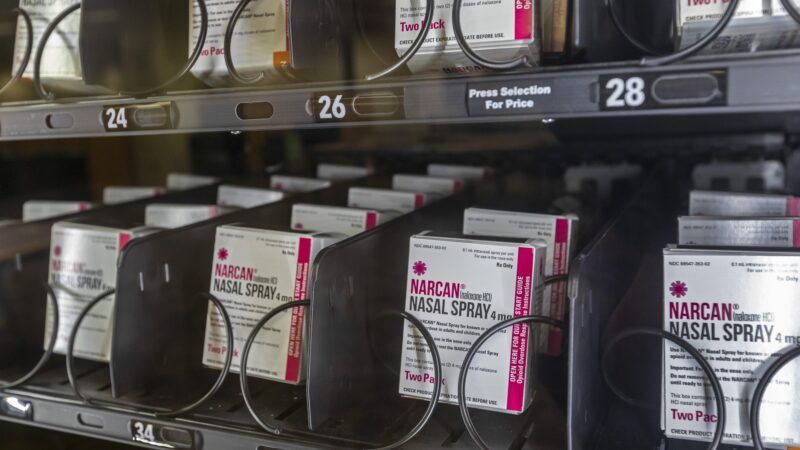FDA Will Finally Let You Get Naloxone Over the Counter
The life-saving drug stops opioid overdoses as they happen, restoring breathing and preventing death. Why did it take so long for the FDA to expand its use?

In November, the Food and Drug Administration (FDA) announced that it would soon determine whether Narcan, the nasal spray form of naloxone, is safe for use without a prescription. It planned to fast-track approval within months.
On March 29, the FDA approved Narcan for sale over the counter. The decision is a welcome, but long overdue, change in drug policy.
Known as an opioid antagonist, naloxone blocks the effects of opioids by binding to the brain's opioid receptors. This means it can actually stop and reverse the effects of an overdose, restoring consciousness and normal breathing, before the recipient dies. But the drug has no effect on people who don't have opioids in their system, meaning it can be used safely without worrying about direct side effects. (While highly effective, it's not a silver bullet: Naloxone works for up to 90 minutes, but opioids remain in the body longer, so naloxone could wear off while a dangerous amount of opioids is still present, requiring further doses.)
In 2021, more than 100,000 Americans died of opioid overdoses; a majority of those resulted from synthetics like fentanyl, which is significantly more potent than morphine or heroin and is often mixed into black-market products. Prior to the FDA's decision, all 50 states and the District of Columbia had laws expanding access to naloxone, but each case still required a pharmacist as part of the transaction.
Naloxone could be a literal lifesaver for any opioid user, and any government action that increases its availability is a net positive. At the same time, it's worth wondering why the FDA's decision took so long and how many lives could have been saved in the process.
The FDA first approved naloxone to treat overdoses in 1971. Initially, an injectable found mostly in hospital emergency rooms, the nasal spray form was approved in 2015. While the intravenous (IV) application is faster, the nasal spray is easier to administer. According to the Centers for Disease Control and Prevention, between 1996 and 2014, people without medical training reversed at least 26,463 overdoses with naloxone.
Research shows that greater awareness and availability of naloxone results in fewer overdose deaths. In a 2017 briefing guide for first responders, the Drug Enforcement Administration (DEA) recommended that paramedics and law enforcement carry naloxone in a personal protective equipment kit.
And yet the FDA waited until now to approve it for sale without a prescription, 50 years after it was first authorized and eight years after the nasal spray. In 2018, Surgeon General Jerome Adams recommended expanding access to naloxone but stopped short of recommending it be made available without a prescription. As Cato Institute Senior Fellow Jeffrey Singer wrote in Reason at the time, Adams had the authority to "formally ask" the FDA commissioner "to order an expedited review with the goal of making naloxone available over the counter as quickly as possible," which he did not do.
Since Narcan's authorization in 2015, hundreds of thousands of Americans have died of opioid overdoses. Meanwhile, a bystander was present in nearly 40 percent of opioid- and stimulant-related overdose deaths. If naloxone were available to them over the counter, there's no telling how many lives could have been saved.



Show Comments (8)